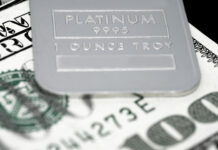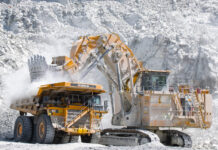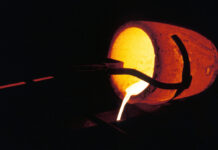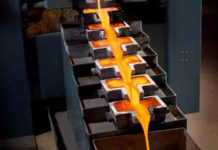
THE improvement in the gold price and weakness in the Canadian dollar has made Gold Fields’s $1.2bn purchase of Osisko Mining in October look “significantly cheaper”, said the gold miner’s CEO, Mike Fraser.
“It wasn’t an easy call to buy 50% of Osisko but as the Canadian dollar weakened, and as the gold price is up nearly 30% it is on both terms of trade a significantly cheaper deal,” said Fraser. “It was a big deal for us but then we were also buying control.”
Gold Fields bought the balance of Osisko Mining in October for C$1.93bn (US$1.39bn) having bought an initial 50% in May 2023 for the much lower sum of C$600m (then US$440m). The price paid for the second tranche raised eyebrows, especially as Gold Fields will spend C$1.1bn (in 2022 terms) developing Osisko’s Windfall project.
“On a fundamnetal value basis, given the [Windfall] asset, where it was, and the expansion potential, it will still be a good deal,” said Fraser.
“Some parts of the team were asking why pay at the top of the cycle,” he said. “But who knows where gold will go, and we need to continue to develop the portfolio. Two years from now, Windfall will be a lot more expensive,” he said.
Gold Fields risked being outbid had it not bought Osisko in two stages. Had that happened, it would have been another failure to compete on the international stage for the Johannesburg-headquartered firm.
In 2022, Gold Fields lost out to a joint $4.8bn bid from Agnico Eagle and Pan American Silver, resulting in the resignation of Chris Griffith, Gold Fields’s then CEO.
Fraser said the board had learned a lot of lessons from that episode. The company would continue to look out for M&A opportunities, but in smaller packages, he said.
Fraser is Gold Fields’s first CEO since Griffith’s departure (South African operations head Martin Preece was acting CEO for about a year), but his first six months in charge were choppy. Operational problems, not least the failure to fully ramp-up the Chile project Salares Norte to plan, resulted in group production and cost revisions.
“It was definitely a year of two halves,” said Fraser who acknowedges his team were “naive” in thinking Salares Norte could be ramped up as quickly as first guided. “But in the second half we regained some credibility, and you will see in the fourth quarter we have come through very nicely.”
Shares in Gold Fields are just over 30% higher year-to-date having recovered at the back end of last year. “We were in the naughty corner last year after the production downgrade. Over the last five years Gold Fields has tended to outperform the market. But we’ve not got the full credit for the portfolio we can deliver.”
Production will be in the low ‘two millions’ (of ounces) in 2025 but once Salares Norte is fully ramped up – to a nameplate capacity of about 550,000 oz/year – production will hit about 2.5 million oz. Thereafter, Osisko’s Windfall project will start to deliver.
“Windfall is a long life portfolio. Its analogue is St Ives (Gold Fields’s mine in Australia). Given the size of the land package there will be another Windfall deposit on the property.
“The ounces we are bringing on are low cost so there will be margin expansion and with a high gold price there is a good tailwind. We still think on peer group basis that we are undervalued. But if we can deliver, we have got a good story to tell.”











